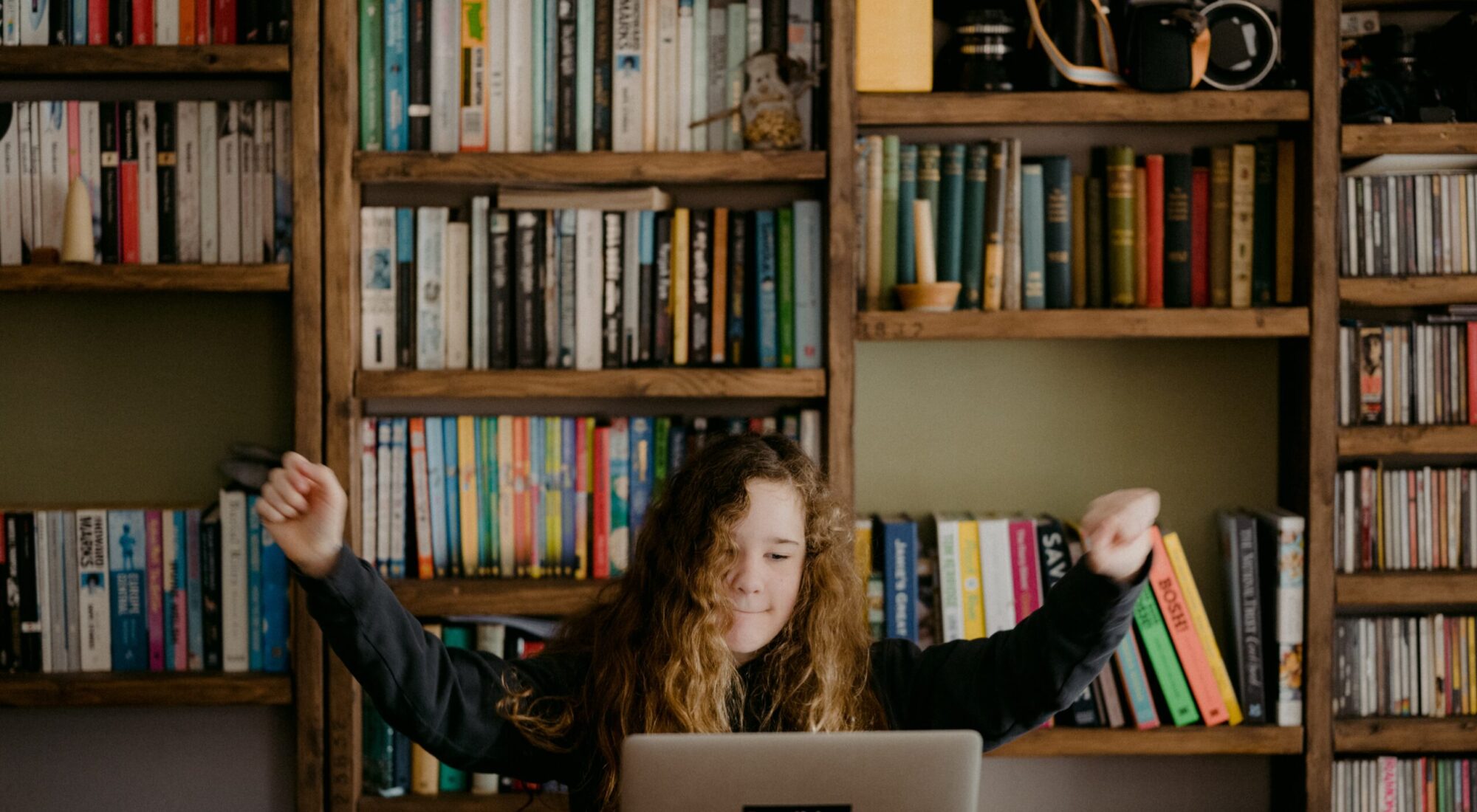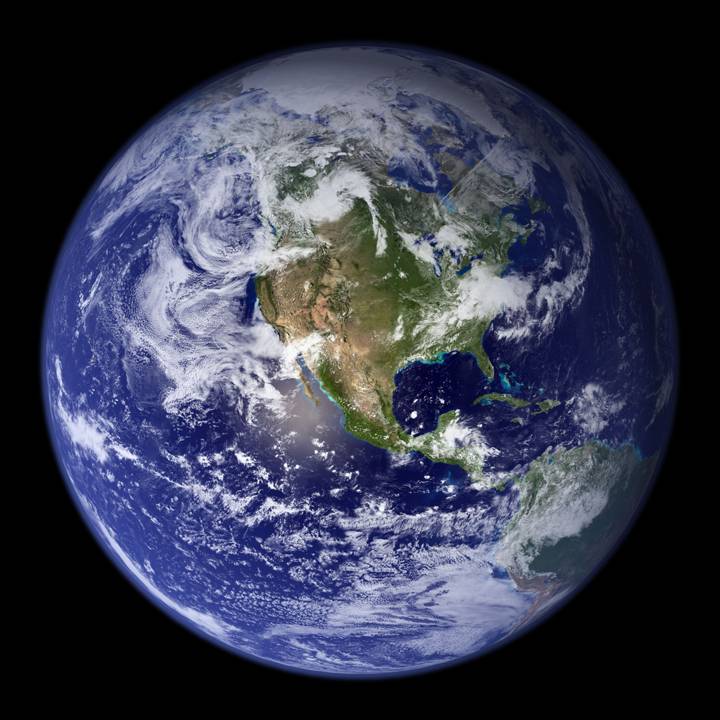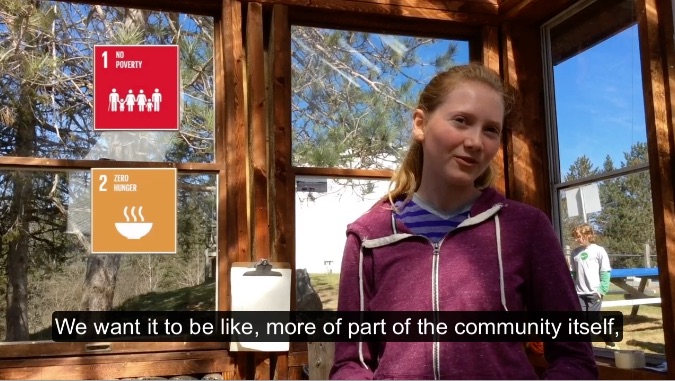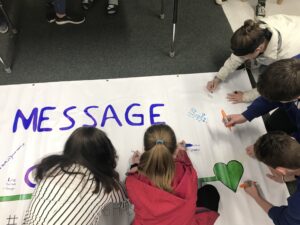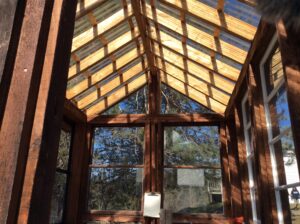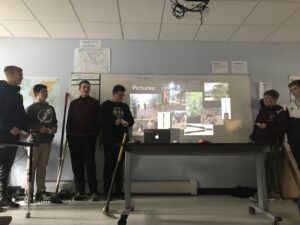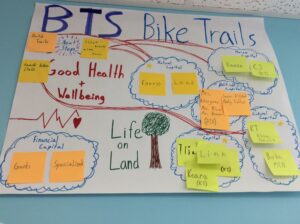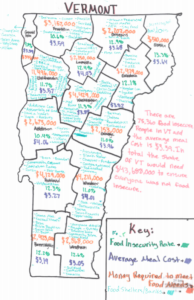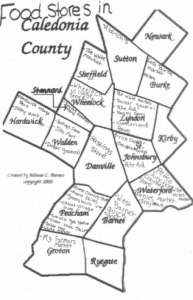We’re not talking enough with students about climate change
At least, many of us are not.
At the Global Youth Climate Strike last fall, I spoke with a lot of students who are really concerned about the future. Like, really concerned. Topping their list of worries is that not only are adults not doing enough to address climate change, but we’re also not talking with them (much) about it either. One student even characterized our inaction on climate as the ultimate homework procrastination.
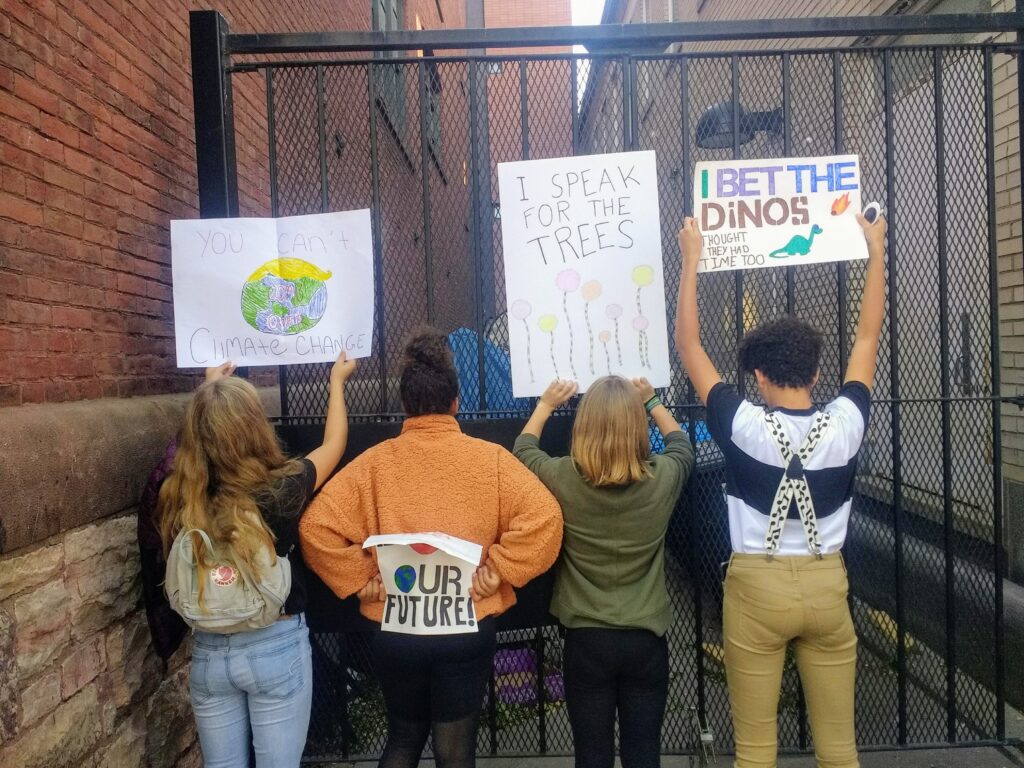
But why?
I have a few hunches: first, despite being addressed in curriculum content standards, including the Next Generation Science Standards and the C3 Social Studies standards, climate change somehow feels like a political issue.
Newsflash: It’s not. It’s not a political issue. It’s science. And civics. It’s everything, really. And all too imminent. I mean sure, it has political implications, economic implications, social, ecological…it changes everything.
Yet wading into anything that feels like partisan waters can be anxiety-provoking for educators.
And speaking of anxiety, yeah, well, eco-anxiety made Oxford’s shortlist for words of the year 2019. Climate emergency won the top spot, and the whole list was related to climate change. Many of us are feeling the burn, so to speak. And for many of us, our strategy is to tamp that feeling down and focus on something else.
The problem is so very big and complicated, and we are so very small.
Or so it seems. It is very easy to feel powerless in the face of such a complex, global challenge.
And yet. The future is at stake. And as educators, just as we value our students, we value their future. Our job is to help prepare them for that future, however uncertain it may be. And we can’t get there by ignoring or minimizing the threat posed by climate change.
So what’s a teacher to do?
I don’t have all the answers, but I have a few ideas. These, plus a little courage will move us in the right direction.
Knowledge is power
Climate change is a trans-disciplinary concept. There is not a content area that isn’t connected to this issue. From math to art, relevant academic connections can be made. Our students are asking us to help them understand what’s happening, why, and what we can do about it.
It’s science:
To start, help students understand the facts of climate change in a developmentally appropriate way. Provide matter-of-fact explanations about the science of climate change. Help students understand what greenhouse gases are and how they function. Explore what happens when we upset the carbon balance in our atmosphere, and how scientists use models to try to predict and understand the impacts and outcomes of these changes in global chemistry.
Here are a few science resources to help you get started:
- Vermont Energy Education Project (VEEP) – their Energy Action Project Institute and Youth Climate Leaders Academy are both stellar!
- Shrinking our Footprints – this is a great project-based learning unit from PBL Works
- Climate Change Education from Stanford University’s Stanford Earth has a middle grades climate change unit ready to go!
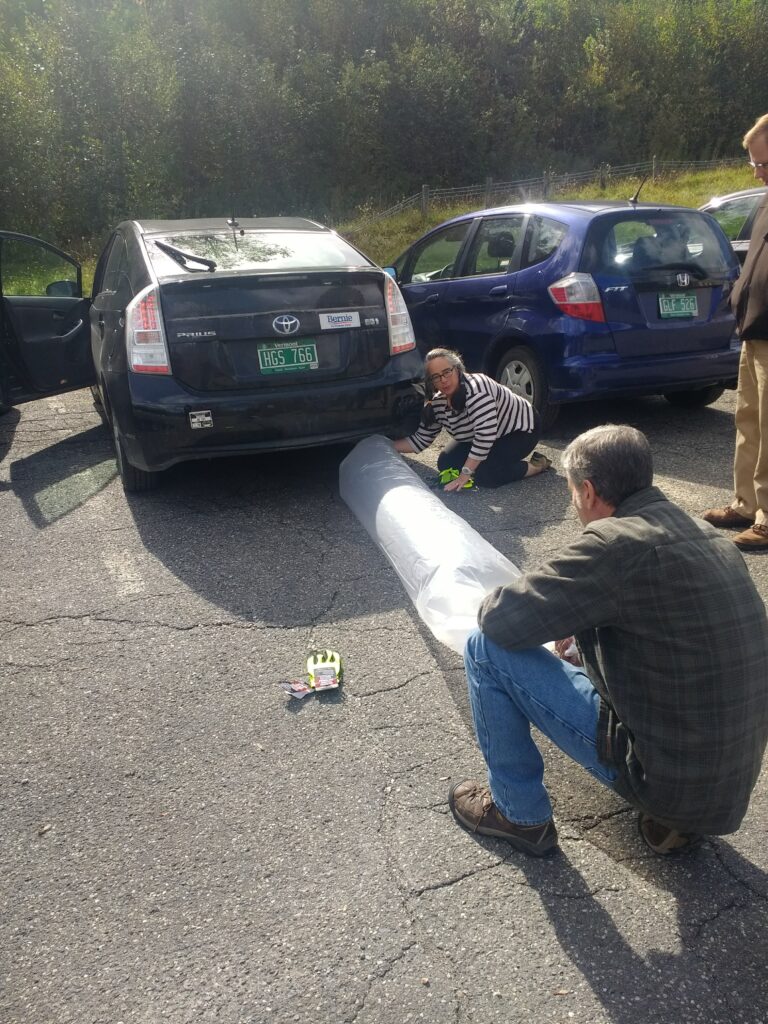
It’s civics:
Help students discover how governments — from local and federal and beyond- work and how we can get involved. Explore international policy and global efforts to combat climate change.
Who is in charge, makes laws, benefits, and suffers? What happens when we don’t follow through? How does change happen?
Help students understand power and privilege. Who has benefited from the dominant global system? And who has suffered as a result? Who is predicted to suffer the most severe impacts of climate change first? What is our responsibility?
Check out these civics resources:
- The Pulitzer Center has great resources, including the Losing Earth unit as well as a collection of stand-alone lessons
- Civic Online Reasoning (again, from Stanford University) has great media literacy lessons that can be applied to climate change content
- The Vermont Youth Lobby is an organization made up of middle and high school students from across Vermont who are getting civically engaged: this is powerful, check it out!
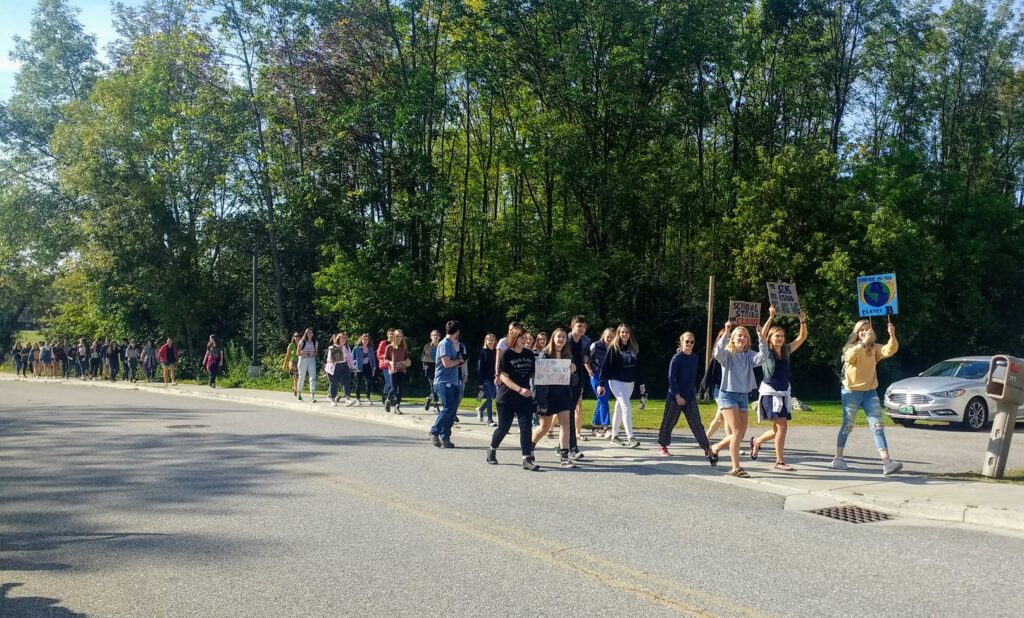
And sometimes it’s both together:
Learn together about humans’ relationship with the earth and other living things. Discuss the concept of natural resources. Identify how we use earth’s resources and explore the mental models and perspectives on how those resources should be consumed (hint: contrasting a Western capitalist mind with an Indigenous mindset can be revealing).
Check out this Tar Sands – Keystone XL role play from A People’s Curriculum for the Earth from Rethinking Schools.
It’s ok if you don’t have all the answers! Be the lead learner and model for students how we can seek answers to our questions.

And it’s connected to everything.
Help students become systems-thinkers, who can flexibly understand the relationships and interconnectedness of systems, their parts, and issues. Teach them to look beyond the surface to the complexity of the interactions within and between ecological, economic, and social systems. (Hint: The Climate Change Playbook has a ton of great games that help students understand these concepts and more.)
Keep it developmentally appropriate
We need to be real, and we need to be mindful. Exposing kids, especially younger ones, to the horrors of starving polar bears or burned kangaroos may lead to what educator David Sobel termed ecophobia, which means a fear of the natural world. This fear can lead to a sense of powerlessness and withdrawal from nature (and activism).
Help them find answers to their questions, but avoid alarmism. It’s paralyzing; it invokes our flight, fright, or freeze response. Instead, be truthful while emphasizing the efforts focused on mitigating the problem. There is hope; we are the hope.
Developmentally speaking, our students are primed to seek opportunities to develop their competence and autonomy, to fight injustice, and to seek connection. Lead the way!
Cultivate agency and empowerment
Once we’ve kindled interest (and maybe a little righteous indignation) and our students’ passion for making a difference, it’s time to teach them that no one is too small to make a difference.
Think globally, act locally
Yeah, that catchphrase harkens back to the eighties, at least. But it holds.
Use your own community as a setting for getting students engaged in tackling global issues. Engaging in local service-learning projects will help students develop a sense of agency and empowerment. Through this work, they will discover their ability to make a difference right here, right now.
Help your students start a school-community garden, initiate a no-idling campaign in your school parking lot, or even establish a climate action club. Let them lead. They have great ideas! When we exercise our ability to make a difference, it buoys us.
Enter: service-learning
I am happy to report that this blog is packed full of great resources for service-learning, project-based learning, and using frameworks like the United Nations’ Goals for Sustainable Development, also known as the SDGs or Global Goals, which specify 17 goals that folks across the globe are working on together.
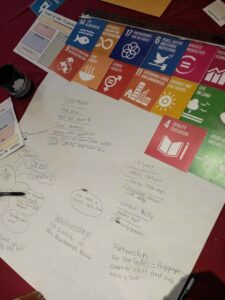
Here are some of our best resources on service-learning:
- TIIE’s Service-Learning Toolkit – This page gives an overview of the approach and points to our collection of resources
- How to plan a service-learning project in five stages lays it out clearly
- A critical lens on project-based learning asks us to explore the positives as well as the negatives, which is a great place to go with climate change projects
- Introducing assets-mapping guides us in identifying those positives in our community
And a few more that explore ways you can use the Global Goals:
- Go global with your PBL
- How students can make global connections
- How to make real, sustainable change in the Northeast Kingdom
- 4 ways students are tacking the UN’s Global Goals in Vermont
- 3 #GlobalGoals projects feeding Vermont
Quick shout out to my brilliant colleagues Katy Farber and Jeanie Phillips, who wrote most of the posts on these lists (and Katy even wrote a great book on the topic!)
Finally, feel the feelings
Grappling with climate change is scary. The future may be uncertain, but the days ahead are likely to grow harder. It’s important that we acknowledge our feelings, not tamp them down. The grief we experience when we confront the impacts of climate change and the sixth mass extinction unfolding around us is real. It is also evidence of our deep connection to the earth and the other life we share this planet with.
Sarah Jaquette Ray’s Coming of Age at the End of the World guides educators to attend to both the affective and academic in the classroom. While her students are a bit older, her point remains valid. We have to welcome students’ fully human selves in the classroom. Which means we have to welcome our fully human selves, too.
In order to be able to make space for emotions that may arise for students, we need to be able to acknowledge and confront our own first. We do this emotional work so that we may move through the despair into hope and courage, and show them the way.
